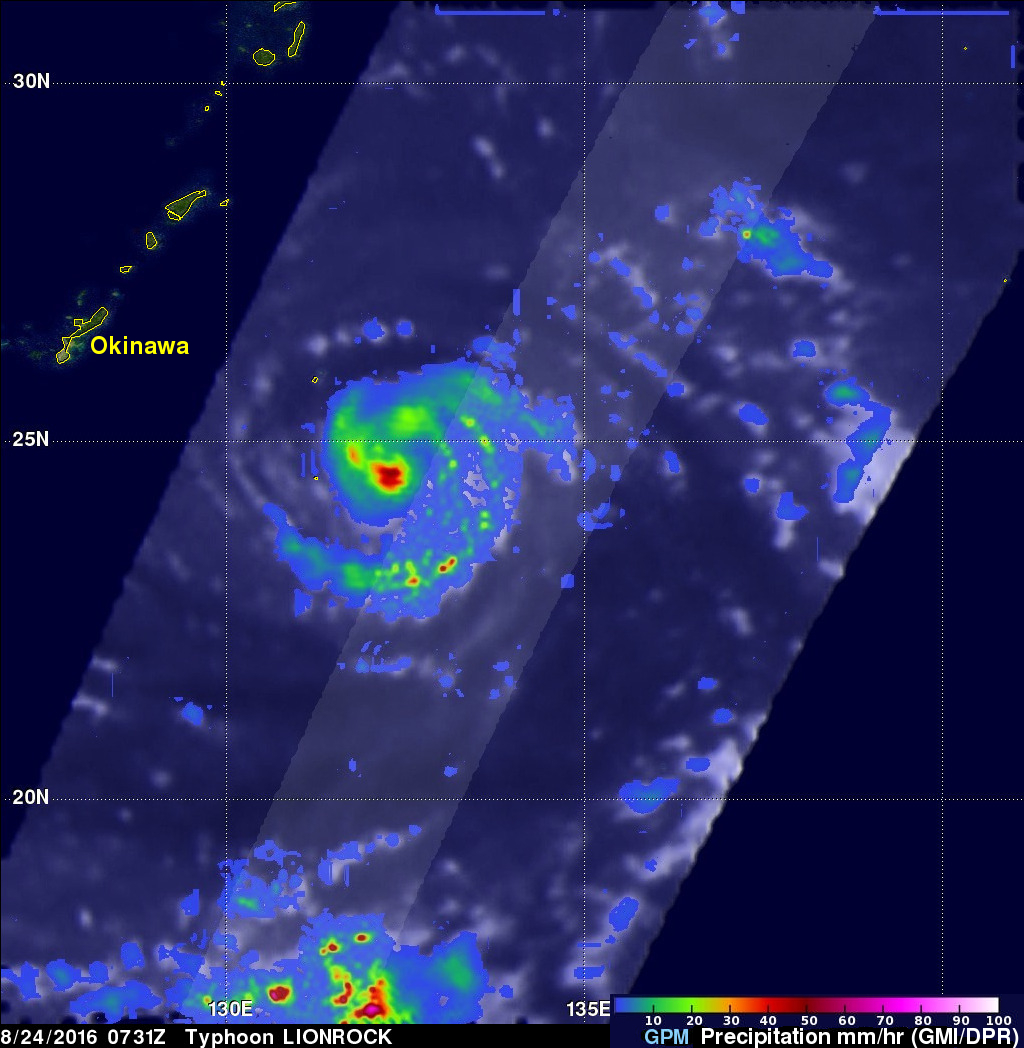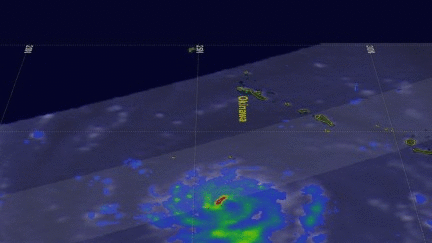Typhoon Lionrock's Intensification Seen By GPM
Since August 15, 2016 Japan has been by hit by three tropical cyclones called Mindulle, Chantu and Kompasu. Tropical cyclone Lionrock may be the next to affect Japan. Lionrock formed east of Japan on August 18, 2016 and passed by to the south of Japan as a tropical storm. Loinrock then interacted with tropical storm Mindulle which spun by to the east. Mindulle, although somewhat weakened by Lionrock's outflow, hit Tokyo killing at least 2 people. Lionrock then moved to the southeast of Okinawa and became a powerful typhoon.
The GPM core observatory satellite recently passed over typhoon Lionrock twice. On August 23, 2016 at 1811 UTC GPM saw Lionrock when it was first classified as a typhoon. Lionrock had winds of about 65 kts (75 mph) at that time. GPM's Dual-Frequency Precipitation Radar (DPR) instrument sliced through the western edge of the typhoon's eye. Rainfall was measured at a rate of over 222 mm (8.8 inches) per hour in intense storms on that side of the eye wall. Lionrock was a much more powerful typhoon with winds of about 100 kts (115 mph) when the GPM satellite flew over again On August 24, 2016 at 0731 UTC. This made it a category three on the Saffir-Simpson hurricane wind scale. GPM's Microwave Imager (GMI) showed an area of very heavy precipitation occurring just southeast of the powerful typhoon's eye and intense rainfall within feeder bands.
GPM's Radar (DPR Ku Band) sliced through Lionrock and those data were used to show a 3-D cutaway view of precipitation structure within the typhoon. DPR showed that some of the tall thunderstorm towers in Lionrock's eye wall were reaching heights almost 17 km (10.5 miles).
Typhoon Lionrock is expected to move very little for 36 hours due to weak steering currents aloft. The Joint Typhoon Warning Center (JTWC) predicts that this will change after that as the near-equatorial ridge builds to the south of Lionrock and a mid-latitude trough deepens over Japan. Typhoon Lionrock is then predicted to be steered rapidly toward the northeast past southeastern Japan.




